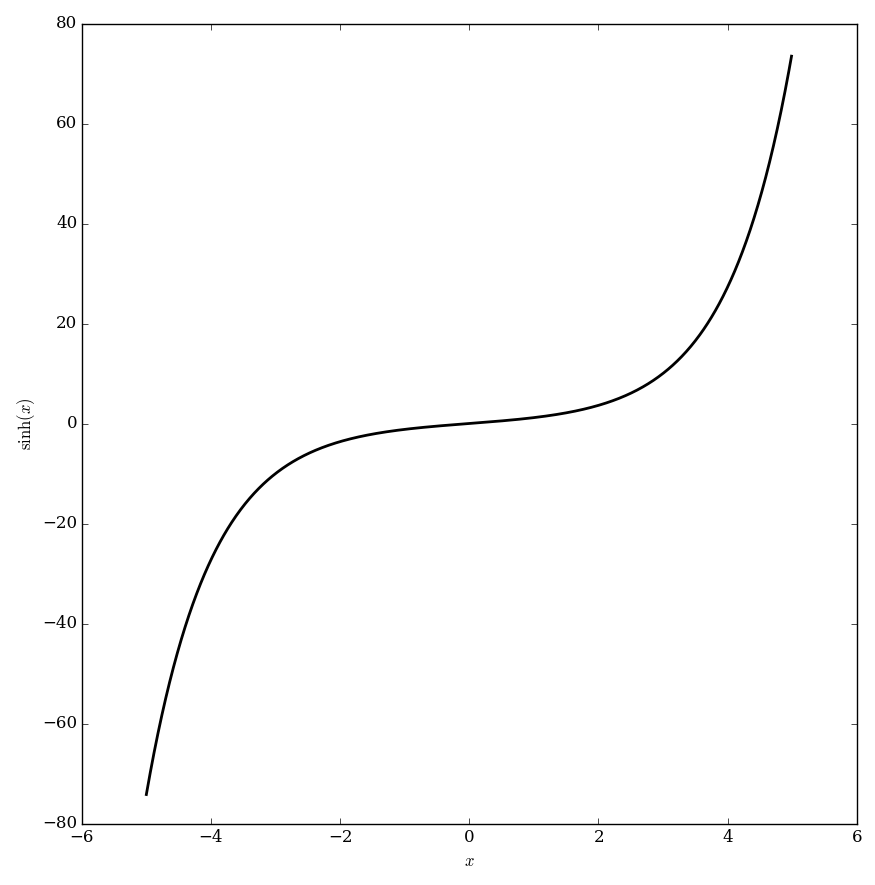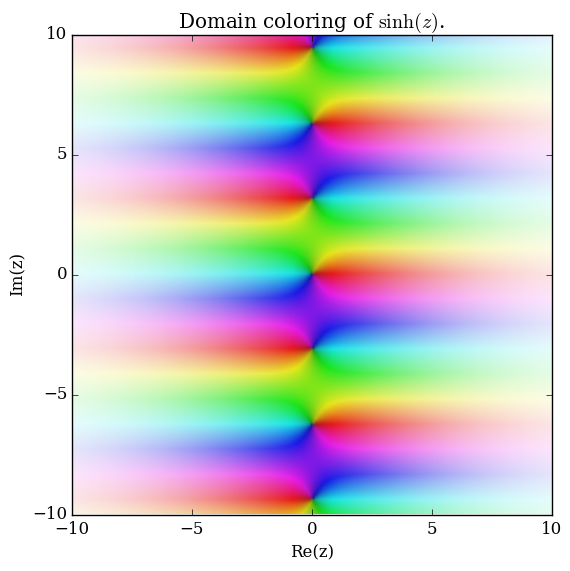Sinh
From specialfunctionswiki
The hyperbolic sine function $\mathrm{sinh} \colon \mathbb{C} \rightarrow \mathbb{C}$ is defined by $$\mathrm{sinh}(z)=\dfrac{e^z-e^{-z}}{2}.$$ Since this function is one-to-one, its inverse function the inverse hyperbolic sine function is clear.
Domain coloring of $\sinh$.
Properties
Derivative of sinh
Pythagorean identity for sinh and cosh
Relationship between sinh and hypergeometric 0F1
Weierstrass factorization of sinh
Taylor series for sinh
Relationship between Bessel I sub 1/2 and sinh
Relationship between sin and sinh
Relationship between sinh and sin
Relationship between tangent, Gudermannian, and sinh
Relationship between sinh, inverse Gudermannian, and tan
See Also
References
- 1964: Milton Abramowitz and Irene A. Stegun: Handbook of mathematical functions ... (previous) ... (next): 4.5.1

